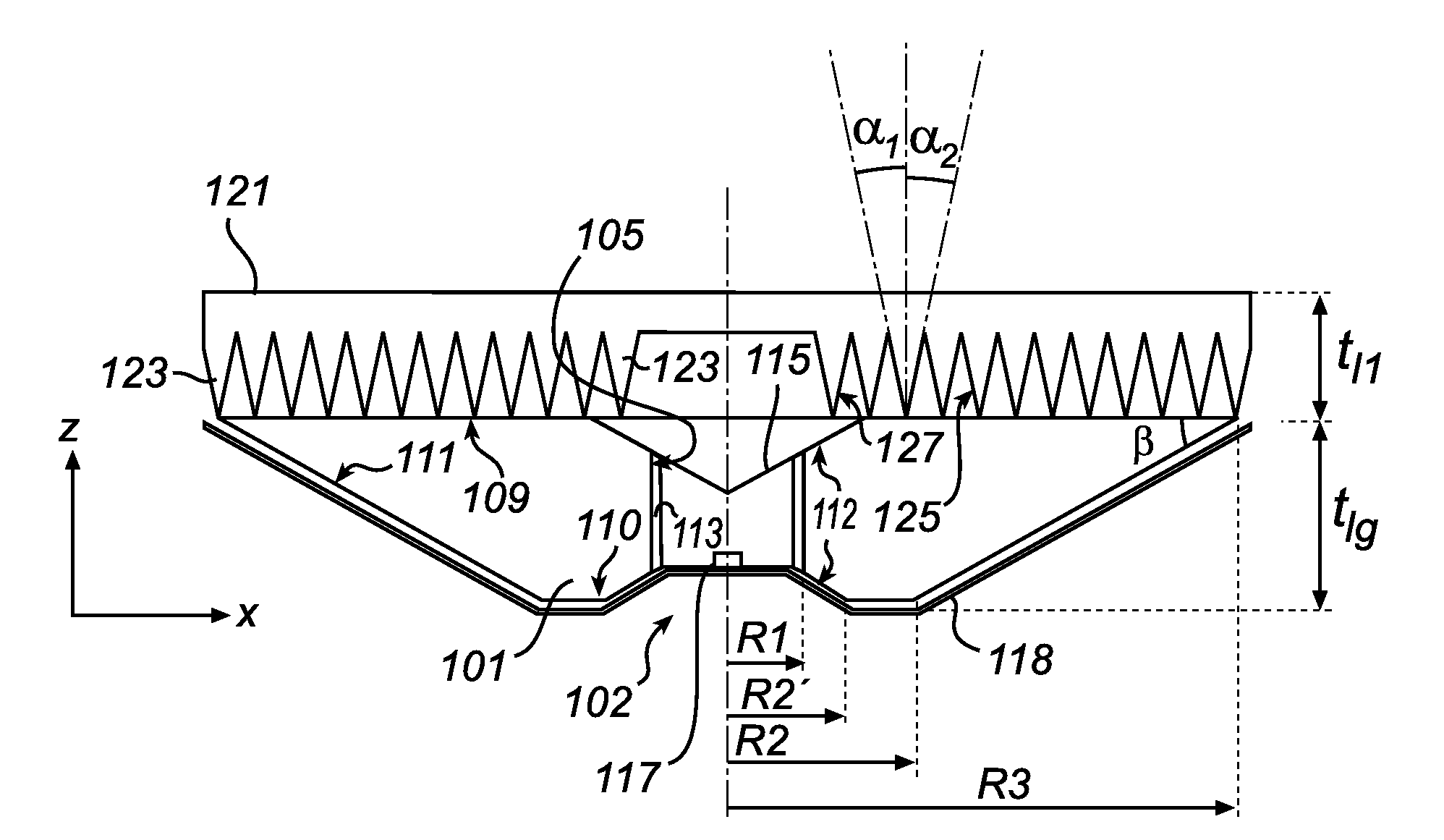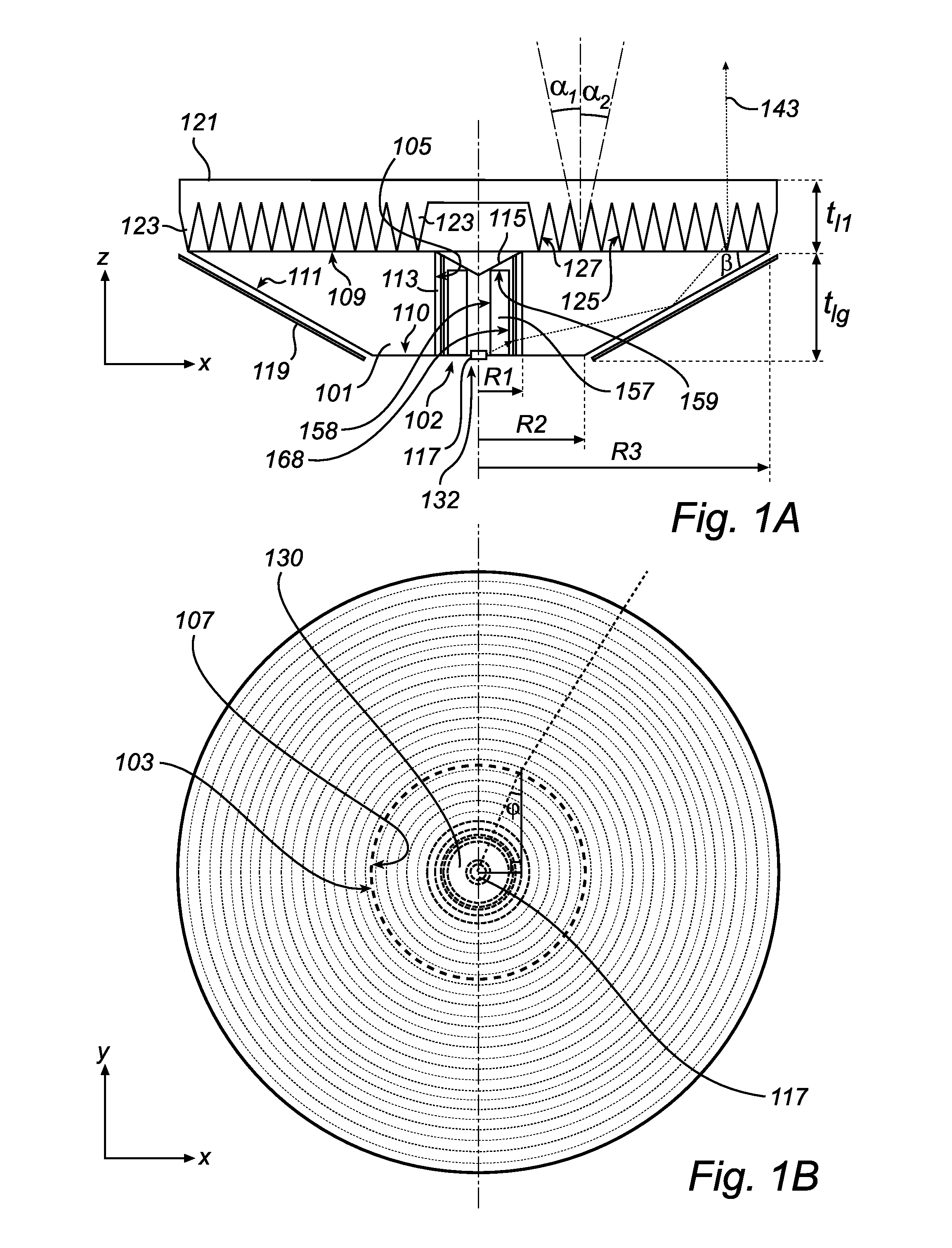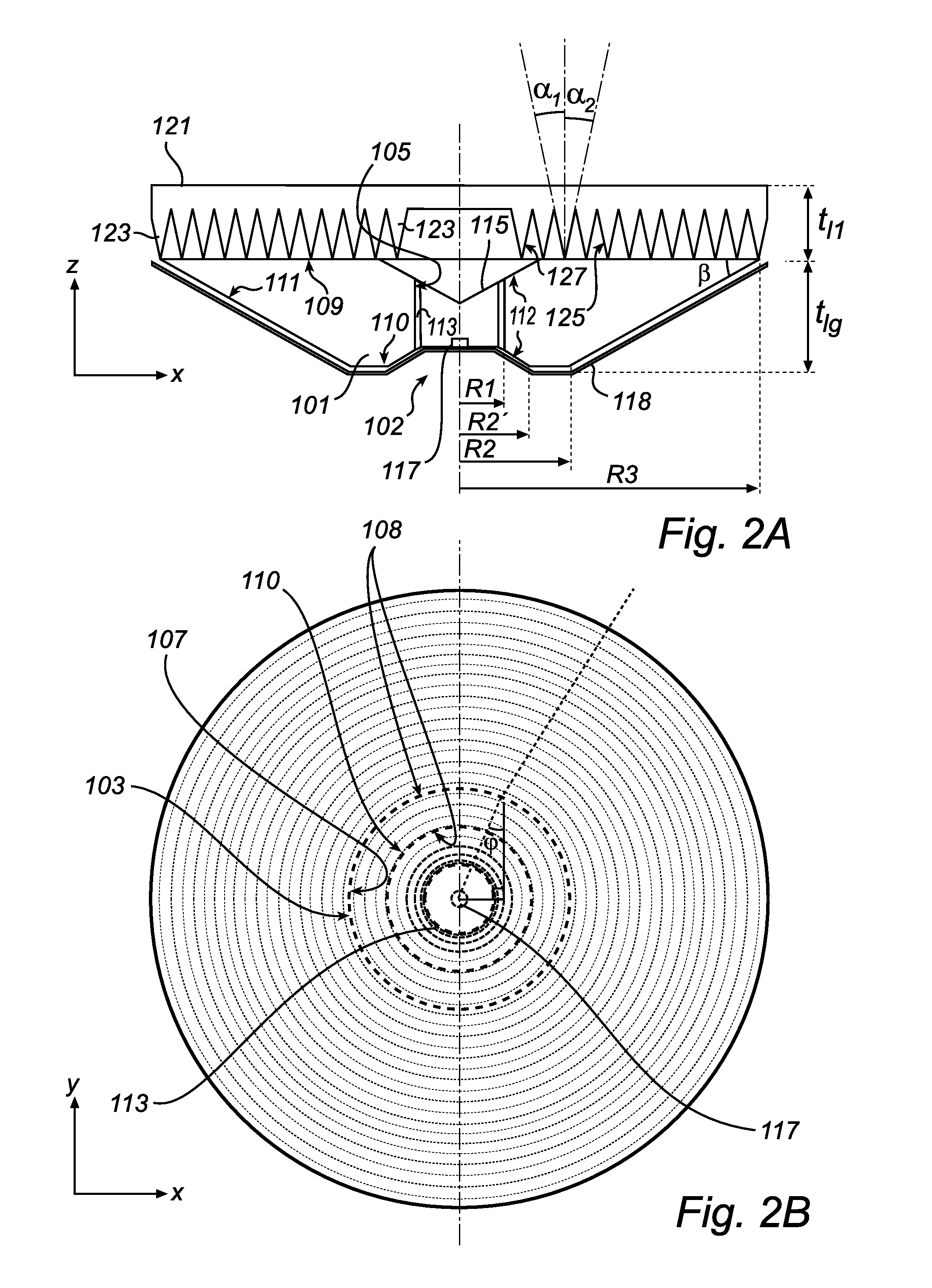Optical arrangement
- Summary
- Abstract
- Description
- Claims
- Application Information
AI Technical Summary
Benefits of technology
Problems solved by technology
Method used
Image
Examples
first embodiment
[0080]FIGS. 1a-1b show a cross-sectional side view and a top view of a luminaire arrangement according to a The shown luminaire arrangement comprises a light guide 101, here circle symmetric in a plane y-x. The light guide 101 has a cylindrical through-hole 102, which inner side is a light-entry surface 105 covered by a light emitting layer 113, here a layer that emits light upon illumination, preferably a phosphor layer. The light emitting layer 113 is not in direct contact with the light-entry surface 105, instead there is a small, equidistant air gap between the light-entry-surface 105 and the light emitting layer 113. The gap is preferably as small as possible without there being any optical contact between the surface 105 and the layer 113, preferably the gap is less than 1 mm. The layer 113 may even be in mechanical contact with the surface 103, as long as there is no optical contact. Note that in FIG. 1A the shown gap between the layer 113 and the surface 105 is exaggerated....
second embodiment
[0109]FIGS. 2a-2b show a cross-sectional side view and a top view of a luminaire arrangement according to a
[0110]Most is the same in the second embodiment and the first embodiment. However, one difference is that there is no second light guide 157 present and also that the mirror layer 119 has been replaced by a reflecting layer 118 covering not only the outer side of the reflecting surface 111 of the light guide, but also an outer surface side of the surfaces 110, 112 in the light-entry portion 103 and one opening of the cylindrical hole 102. However, it is understood that a second light guide may be used also with the second embodiment. Furthermore the light source 117 is in the second embodiment arranged on the side of the reflecting layer 118 facing the hole 102. The reflecting layer 118 has a mirror, or specularly reflecting, surface facing the light guide 101, and is preferably not in optical contact with the light guide 101.
[0111]Another difference between the embodiments of ...
third embodiment
[0144]Light can be coupled into the second light guide sections 175 via a light input cavity 167 comprising a light source 117b as shown in FIG. 5b, but can also, as an alternative or supplement, be coupled into second light guide sections 157 by a light source 117 (not shown in the embodiment of FIG. 5) arranged to illuminate a light input surface 158, typically a peripheral second light guide section 157 with a surface 158 that is not a closing surface, for example a light source 117 arranged opposite to such surface 158 as described above in connection with the
[0145]FIG. 6a-b show a respective 3-dimensional perspective view and side cross-sectional view of a luminaire arrangement according to a fifth embodiment. The optics for the output of light of this luminaire is more basic and straightforward than in the previous embodiments, but the principle of guiding light to a light emitting layer 113 using a second light guide 157 and cavities 174 is the same as in the fourth embodimen...
PUM
 Login to View More
Login to View More Abstract
Description
Claims
Application Information
 Login to View More
Login to View More - R&D
- Intellectual Property
- Life Sciences
- Materials
- Tech Scout
- Unparalleled Data Quality
- Higher Quality Content
- 60% Fewer Hallucinations
Browse by: Latest US Patents, China's latest patents, Technical Efficacy Thesaurus, Application Domain, Technology Topic, Popular Technical Reports.
© 2025 PatSnap. All rights reserved.Legal|Privacy policy|Modern Slavery Act Transparency Statement|Sitemap|About US| Contact US: help@patsnap.com



